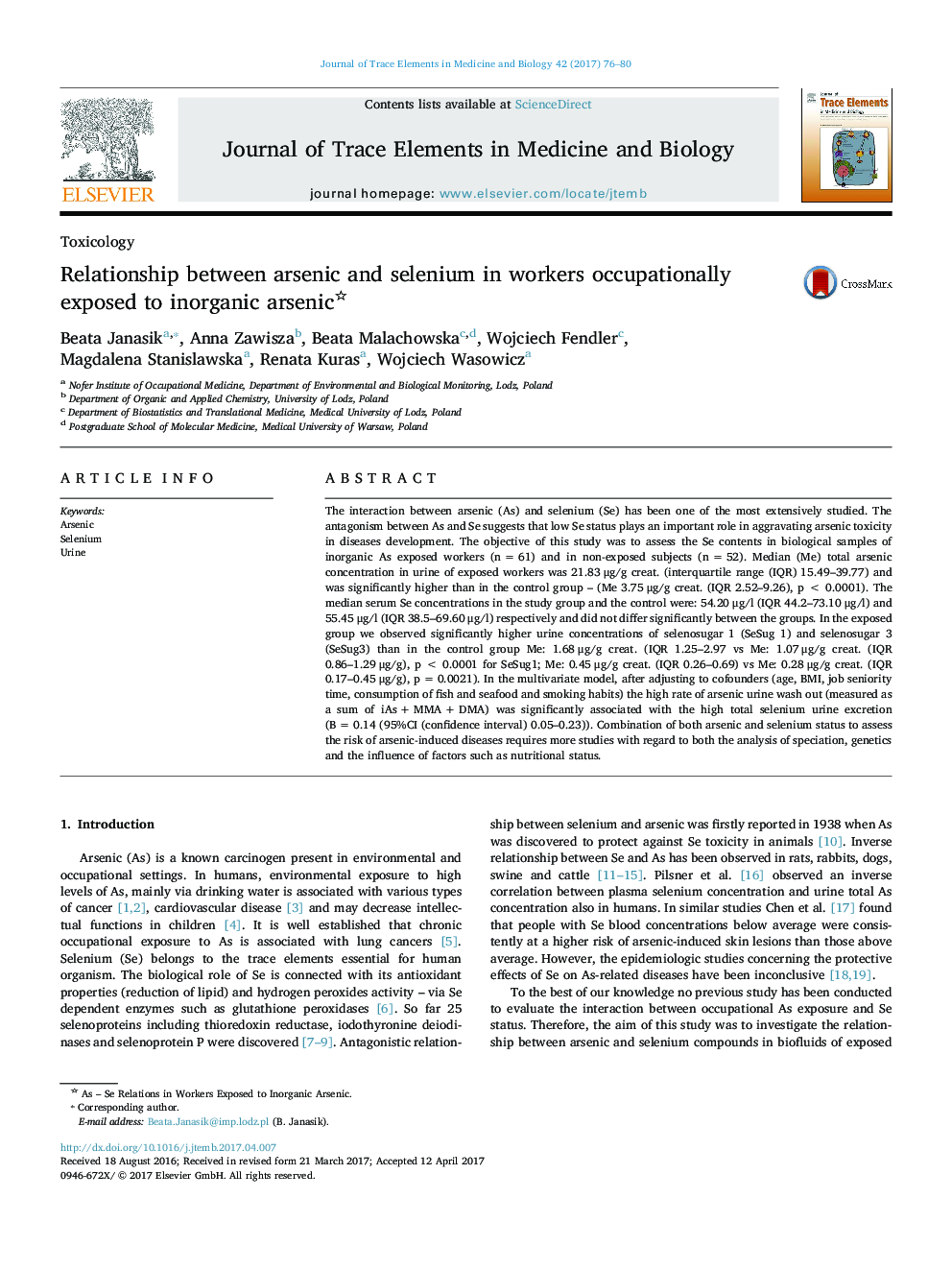| Article ID | Journal | Published Year | Pages | File Type |
|---|---|---|---|---|
| 5138896 | Journal of Trace Elements in Medicine and Biology | 2017 | 5 Pages |
Abstract
The interaction between arsenic (As) and selenium (Se) has been one of the most extensively studied. The antagonism between As and Se suggests that low Se status plays an important role in aggravating arsenic toxicity in diseases development. The objective of this study was to assess the Se contents in biological samples of inorganic As exposed workers (n = 61) and in non-exposed subjects (n = 52). Median (Me) total arsenic concentration in urine of exposed workers was 21.83 μg/g creat. (interquartile range (IQR) 15.49-39.77) and was significantly higher than in the control group - (Me 3.75 μg/g creat. (IQR 2.52-9.26), p < 0.0001). The median serum Se concentrations in the study group and the control were: 54.20 μg/l (IQR 44.2-73.10 μg/l) and 55.45 μg/l (IQR 38.5-69.60 μg/l) respectively and did not differ significantly between the groups. In the exposed group we observed significantly higher urine concentrations of selenosugar 1 (SeSug 1) and selenosugar 3 (SeSug3) than in the control group Me: 1.68 μg/g creat. (IQR 1.25-2.97 vs Me: 1.07 μg/g creat. (IQR 0.86-1.29 μg/g), p < 0.0001 for SeSug1; Me: 0.45 μg/g creat. (IQR 0.26-0.69) vs Me: 0.28 μg/g creat. (IQR 0.17-0.45 μg/g), p = 0.0021). In the multivariate model, after adjusting to cofounders (age, BMI, job seniority time, consumption of fish and seafood and smoking habits) the high rate of arsenic urine wash out (measured as a sum of iAs + MMA + DMA) was significantly associated with the high total selenium urine excretion (B = 0.14 (95%CI (confidence interval) 0.05-0.23)). Combination of both arsenic and selenium status to assess the risk of arsenic-induced diseases requires more studies with regard to both the analysis of speciation, genetics and the influence of factors such as nutritional status.
Related Topics
Physical Sciences and Engineering
Chemistry
Analytical Chemistry
Authors
Beata Janasik, Anna Zawisza, Beata Malachowska, Wojciech Fendler, Magdalena Stanislawska, Renata Kuras, Wojciech Wasowicz,
